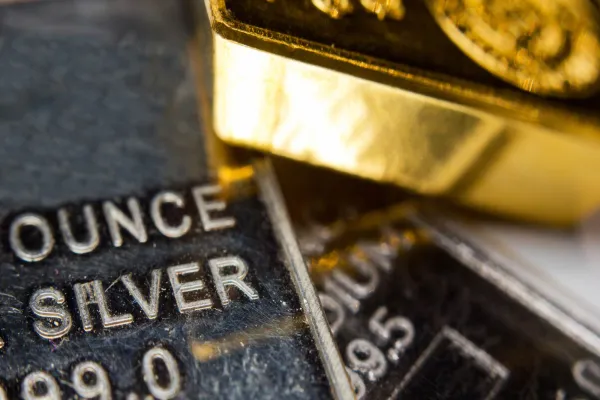For investors, China is truly becoming the center of the world.
Demand from an emerging-markets economy with the potential to grow into a global powerhouse is driving stock markets and growth not only in the Middle Kingdom but throughout Asia and the West. China's 9.1 percent real GDP growth was the fastest in the world last year, and the MSCI China free stock index rose 80 percent. Meanwhile, East Asia's overall GDP grew by more than 5 percent in part because the whole region was selling to China everything from auto parts and semiconductors to ships; bourses in Malaysia, Singapore, South Korea, Taiwan and Thailand all boasted equity gains of more than 20 percent. And U.S. and European steel companies saw their share prices rocket to unprecedented heights in 2003 as they ramped up production to help meet the massive development needs of more than a billion Chinese citizens.
"There's every reason to be positive on China's equity market in the long run," says Hong Kong-based Edmund Leung, who runs ABN Amro Asset Management Asia's China equities fund, which ballooned from $75 million to $250 million between December 2002 and December 2003. "The domestic equity market in China is becoming one of the largest in Asia, and, importantly, it's beginning to get the depth of industrial categories -- from agriculture to aerospace. As the market opens up, there will be lots of choices for people who want to invest."
Leung's firm is one of 15 asset managers, including Germany's Allianz, France's BNP Paribas Asset Management, and the U.S.'s Alliance Capital Management and AIG Global Investment, that are trying to take advantage of China's opportunities by establishing joint ventures with local money managers. In March, U.S. fund giant Fidelity Investments announced that it, too, was opening an office in Shanghai.
What these firms find in China's markets will mystify many of them. For all its advances, the country remains complex and opaque. More than 1,400 mainland Chinese companies with a combined $812 billion in market capitalization are listed on exchanges in Hong Kong, Shanghai and Shenzhen, as well as on overseas bourses like New York and London, but the markets sometimes move in different directions, and many of the stocks have only limited liquidity. Frequently, the controlling shareholder is the government, whose intentions are nearly impossible to divine.
All these companies are doing business in a surging economy, fueled by massive capital investments, that many worry is about to implode. Chinese banking authorities apparently share these concerns; they imposed a short-term moratorium on bank lending in late April. Inflation is on the rise, the nation's shaky banking system is ill-equipped to manage the stresses caused by rapid growth, and China's money supply is expanding at an alarming double-digit clip. And investors must contend with disclosure, accounting and governance issues at China's public companies. China Life Insurance Co., for example, recently disclosed that its parent company had been fined by Chinese authorities for accounting problems revealed in an audit, and Beijing-based China Minsheng Banking Corp., the country's only private bank, admitted that it had cut some corners to facilitate a public offering in 2000.
As a result, astute investment insights have never been more valuable or critical to success. That has, in turn, put an even higher premium on sophisticated equity analysis. "Analysts in China have to dig deeper to understand how well or how poorly a company is doing -- you can't just rely on the numbers," says Hong Kong-based Jing Ulrich, director of research and head of Greater China (the mainland, Hong Kong and Taiwan) equities for Deutsche Bank. "You really have to be very skeptical and talk around the company rather than talk to the company itself. You have to talk to suppliers, to the customers, to really understand the whole picture." The research stakes in China are so high these days, adds Ulrich, because "if you get China wrong, you could get the whole world wrong."
The firm that's been getting it right on Greater China more often than its rivals is UBS. The Swiss banking giant takes first place in the China, Hong Kong and Taiwan categories in Institutional Investor's 2004 All-Asia Research Team (ex-Japan). UBS's strength carries over to the rest of Asia. Overall, the firm takes first place for the third year running in II's poll, with a total of 26 positions. In a surprising improvement, CLSA Asia-Pacific Markets jumps six places to No. 2, adding nine team positions for a total of 20 in 2004. And Deutsche Bank, which gains seven positions for 15 this year, rises to fifth from ninth. Credit Suisse First Boston and J.P. Morgan Securities each ease one notch, to third and fourth, respectively.
All of these firms are trying to take advantage of the opening Beijing has given them. A year ago the government started to designate certain overseas brokerage firms as Qualified Foreign Institutional Investors, granting them the right to invest, up to a set limit, in China's $500 billion domestic market for renminbi-denominated common stocks, or A-shares, in Shanghai and Shenzhen. To date, the government has handed out a total of $1.6 billion in quotas to 12 brokerages. Among them: CSFB, Deutsche Bank, Goldman, Sachs & Co. Nomura Securities and UBS. It's expected that a small number of money managers will soon gain similar entrée to China's domestic markets. Beijing now allows foreigners to take minority positions in investment banking joint ventures with local players; Hong Kong-based CLSA Asia-Pacific, which is awaiting QFII approval, has a stake in a joint venture investment bank.
It's a mad scramble for position among the foreigners. UBS plans a more-than-fourfold increase in its coverage list of A-shares by year-end and will shortly add two more researchers to the eight it already has in Shanghai. CLSA Asia-Pacific has three analysts in Shanghai and is looking to hire nine more to supplement the work of 20 researchers it employs in Hong Kong covering Greater China equities. Deutsche Bank, too, expects to have hired and trained nine analysts in Shanghai by year-end. In January, CSFB added two analysts to its China equities research team, part of a 50-person expansion across all of the firm's businesses in the region in 2004; an additional 30 will be hired in investment banking before the end of the year.
The opening of the A-share market gives investors a much more expansive array of investment choices in China. Previously, foreigners were restricted to B-shares, H-shares and red chips. Foreign-currency-denominated B-shares issued by 111 companies are traded in Shanghai and Shenzhen, with a total free float of just $12 billion. H-shares are traded outside China (most often in Hong Kong) but are issued by mainland-incorporated Chinese companies; today there are 30 H-share issues with a free float of $52 billion. Red chips are Hong Kong-traded shares in companies owned by Chinese state ministries or provincial or local governments; the 28 issues with a free float of $49 billion trade overseas and can be owned only by foreigners.
In contrast with this relatively limited menu, the A-share market boasts 1,287 issues with a market cap of $541 billion (bigger than Hong Kong's $487 billion); 63 issues are valued at more than $1 billion each. One big limitation: Beijing controls 68 percent of the A-share market, leaving a free float of only $173 billion.
The A-share market is also more varied than other Chinese bourses. B-shares, H-shares and red chips are concentrated in a handful of sectors like energy and telecommunications (which make up 70 percent of the China listings in Hong Kong). No single sector accounts for more than 17 percent of A-share capitalization. "The domestic A-share market is much more balanced in terms of exposure to different sectors," says Vincent Chan, co-leader of the top-ranked China research team at UBS.
The size and diversity, however, also multiply the dangers for investors unfamiliar with China's notoriously opaque markets. Earlier this year, for instance, China Minsheng Banking admitted that it had faked a shareholder meeting approving a name change, a prelude to its A-share offering in 2000. The bank plans an H-share offering in Hong Kong later this year. Despite the embarrassing revelation, investors drove up the price of Minsheng shares by 2 percent on the day it came clean about the deception.
Research departments at the foreign brokerage firms are taking special measures to protect themselves and their clients. UBS analysts considering initiating coverage of an A-share company must consult a checklist designed to raise red flags. Among them: Is the company audited by an international accounting firm? Does it have complex cross-shareholdings or excessively diverse business activities? Is it transparent? Is it exposed to major political risks? UBS recently passed up coverage of an unspecified A-share utility based on its complex structure, lack of regulatory pricing clarity and a rapid and unexplained shift in revenue mix toward business customers. "With the whole market just opening up, you have to be twice as careful when you initiate coverage of stocks," says Michael Oertli, UBS's co-director of Asia research in Hong Kong.
Buying Chinese shares at generally the right time isn't always enough to make money. Performance can depend on which market a buyer chooses. Last year H-shares shot up 150 percent, Shenzhen B-shares rose 47 percent, and the Shanghai A-share market returned 14 percent. But Shanghai B-shares fell 6.5 percent, and Shenzhen A-shares eased 1.9 percent. In 2004 through mid-April, however, H-shares fell 7 percent, and all of the A- and B-share markets boasted double-digit returns.
Oertli and other research directors agree that Chinese analysts are best suited to help investors meet these challenges. "You want to have local people rather than expats covering China," says Oertli. "China is all about local people and local knowledge."
Local knowledge also helps in scouting out the best investment opportunities. Hui Li, born in China and educated at Shanghai's Fudan University (but a naturalized Canadian) and head of China research at CLSA Asia-Pacific since August 2002, says she found one of her better recent stock picks, Maanshan Iron and Steel Co., after having dinner with a government official in Anhui province who mentioned that every day a long line of trucks waited outside a local plant producing Maanshan's H-shaped steel beams. CLSA Asia-Pacific published several reports on Maanshan shares in the third quarter of 2003 but did not officially recommend the stock until March 2004. Since September, Maanshan shares have risen from HK$1.50 ($0.19) to a high of HK$3.70 in mid-April before trading down to HK$2.50 during the late-April market sell-off.
Finding analysts like Li, whose China team ranks second in this year's All-Asia survey, isn't easy. "I've had an issue finding top talent in the market," says José Linares, head of Asia ex-Japan equities research at J.P. Morgan Securities, who is now immersed in building up the bank's China research after having expanded its India team. "The new generation of China analysts at this stage hasn't had a couple of years of training or experience of bear markets and bull markets." Linares's solution: to transfer four experienced, U.S.-educated, Mandarin-speaking Chinese analysts from Hong Kong and Singapore to Shanghai.
Much of the Asian investment wizardry that investors have appreciated in the past year derived from knowledge of China's voracious appetite for energy to speed its development. Joe Zhang, co-head with Chan of UBS's winning six-member China team, went positive on H-share Yanzhou Coal Mining Co. in November 2002 based on the probability of a coal shortage as demand for power rose. (Yanzhou Coal also lists A-shares.) Yanzhou Coal H-shares jumped from HK$3.00 at the end of 2002 to HK$7.80 at the end of last year, rising to HK$8.35 by mid-April.
William Laukka and his J.P. Morgan colleagues, who leap from runner-up to first place in the Power sector this year, favored Xinao Gas in April 2003 at HK$1.90. The utility's high proportion, relative to competitors, of industrial and commercial customers in China's rapidly growing economy presaged strong earnings growth. Xinao Gas's shares have more than doubled since then.
The success of these and other talented researchers is having exactly the stabilizing effect that Beijing sought when it invited the foreigners in. "The market is becoming much more institutionalized," says Patrick Ho, vice president of ABN Amro Asset Management Asia, which has a 33 percent stake in ABN Amro Xiangcai Fund Management Co., a money management joint venture in Shanghai. Whereas the entire A-share market once rose and fell based on the latest rumor making the rounds of retail investors, it now is starting to discriminate between profitable, well-run companies and poorly managed enterprises with murky financials. "This is very favorable for development of the equity market in China," says Ho, a former fund manager who is advising the new joint venture on its research structure.
So far the government is following through on its promises to improve local market practice. In February the State Council, or cabinet, issued a nine-point blueprint for capital markets reform. Among other things, it advocates steadily opening the market further to foreign investors and drastically raising the standards of corporate governance.
Still, there is a long way to go before the A-share market approximates best international practices. "If you're looking at international investors, there are only 120 to 150 companies that would meet their investment criteria before you even start looking at price," says CLSA Asia-Pacific executive chairman Gary Coull. Only 10 percent of A-share issuing companies are currently audited by affiliates of the Big Four accounting firms.
Given the relatively short list of stocks that have the liquidity and transparency to meet overseas investors' needs, skeptics question whether brokerage firms are overdoing their expansion in Shanghai. "Whatever the potential of QFII, the volumes are still small potatoes in the grand scheme of things," says one Hong Kongbased research director. "As much as no one would admit [this] to a client, the simple fact is that one of the big factors driving the focus on investment research resources into China is the big primary issuance calendar."
Although down from its peak in 2000, when 132 A-share IPOs raised Rmb79 billion ($9.5 billion), the market absorbed 63 more A-share deals in 2003, worth a combined Rmb46 billion. Among the deals on the docket in the H-share market: a $2.5 billion offering from China Netcom Corp. and $2.0 billion in shares from Ping An Insurance. By establishing strong research groups, some brokerages expect to win underwriting mandates on these and other upcoming deals, says the Hong Kong research chief.
Can China keep up the pace -- or are brokerage firms, their analysts and investors about to be greatly disappointed? Fears that the economy might spiral out of control and collapse have already prompted the government to try to curtail credit growth at banks and to rein in the nation's skyrocketing money supply. The consensus view is that these policies will gradually dampen China's growth over the next two years and allow the country to avoid a sharp decline. "There are still risks, but the risks of a hard landing have receded," says Deutsche Bank's Ulrich, whose firm predicts that China's GDP increase will decelerate to a still robust 8 percent this year and 7.8 percent in 2005.
If Deutsche Bank is right, the outlook for China shares in 2004 and 2005 is good. But, as demonstrated by the government's bank lending restrictions in April, there is a possibility that Beijing might take more measures to slow the economy in coming months -- and higher interest rates or new regulation could put a damper on equity returns, Deutsche Bank warns. The bank expects the Shanghai Stock Exchange composite index to fluctuate between 1,600 and 1,800 for the rest of 2004 before climbing higher in 2005. The Shanghai index closed at 1,694 in mid-April.
The biggest risk for the foreigners in China may be how Beijing, known for erratic policy shifts, adapts to its new role at the center of the world. "At the moment, stock market development is getting endorsement from the government," says Bill Sung, chief investment officer at CDC Ixis in Singapore, where he manages a $650 million Asia ex-Japan fund, of which 35 percent is invested in Greater China. "But in China more than most places, if the government doesn't endorse it, then you've got a problem."
One crucial government decision that will affect investment is whether to let China's currency, which most analysts believe is grossly undervalued at 8.3 to the dollar, appreciate. So far, Beijing has opted to keep the renminbi low to stimulate its own export-driven economy and provide jobs. But letting the currency appreciate would allow the marketplace to slow economic growth and ease a recent surge in inflation. Unless it decides to push a strong renminbi, the government may not want to encourage additional foreign investment through programs like QFII that drive its economy ever faster and put upward pressure on its currency.
In the meantime, Western firms hope Beijing will open the door further to overseas money. UBS, which currently has the largest QFII allocation at $800 million, is seeking permission to invest an additional $200 million in China's domestic markets. "We're doing what the Chinese government had hoped for, which is to bring big global fund managers to China," says Nicole Yuen, the firm's head of China equities. "Now we hope they will keep this going rather than stop the momentum."
Some sophisticated investors are hedging their bets in China. Until a clearer economic and political picture emerges, Franklin Templeton Emerging Markets Group chief Mark Mobius will continue to avoid A-share companies like Minsheng Banking, which, in spite of governance shortcomings, recently traded at a price-to-earnings ratio of 42 -- double the average on the Hong Kong exchange. Mobius thinks A-shares, up 24 percent in Shanghai and 17 percent in Shenzhen in 2004 through mid-April, are just too pricey: "The opportunities for purchasing cheaper Chinese companies in Hong Kong and Taiwan makes the A-share market of limited attraction." Mobius will go where his analysis tells him the best values lie.
Click here to see the ranking.
The All-Asia Research Team was compiled by Institutional Investorstaff under the direction of Assistant Managing Editor for Research Lewis Knox and Senior Editor Jane B. Kenney with Senior Associate Editor Tucker Ewing and Associate Editor Emily Fleckner.





